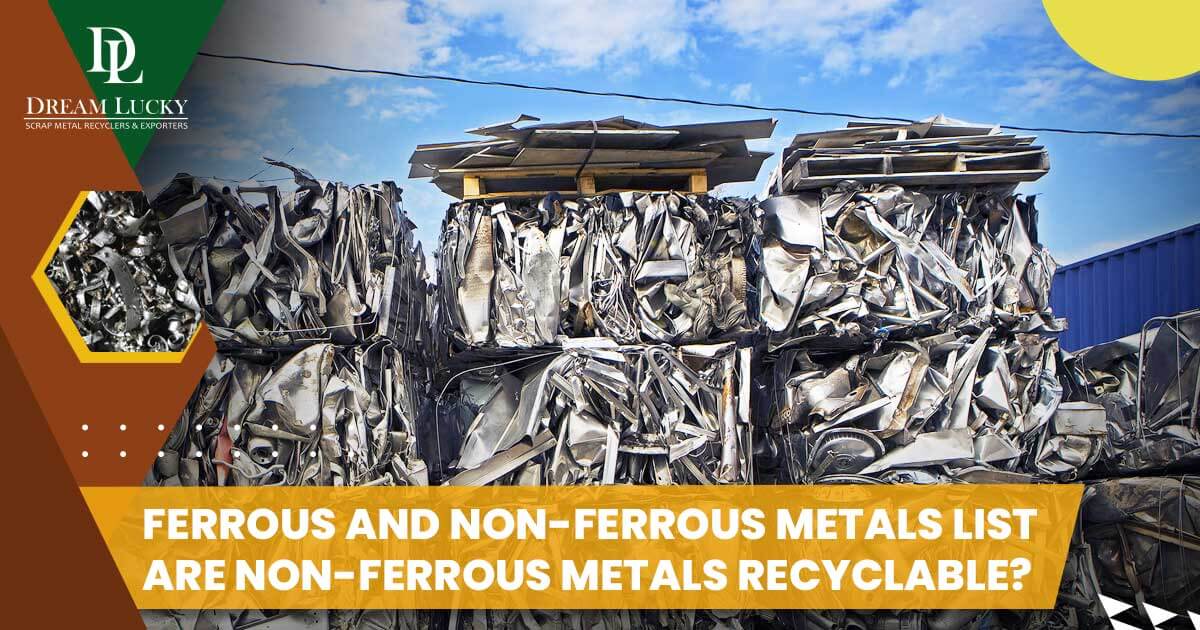
Metals are everywhere, from the steel used in skyscrapers to the aluminium in drink cans. But did you know that metals are divided into two main categories?
These are ferrous metals and non-ferrous metals. The key difference is that ferrous metals contain iron, while non-ferrous metals do not.
Understanding these differences can help you make better choices, whether recycling or choosing the right material for a project. Let’s explore the types of ferrous and non-ferrous metals and their uses, particularly in Australia.
Ferrous Metals List
Ferrous metals are those that contain iron. This gives them specific properties like strength and magnetic qualities, but it also makes them susceptible to rust when exposed to moisture.
Here are the most common types of ferrous metals:
1. Steel
Steel is one of the most widely used metals globally, known for its strength and durability. It’s essential in construction for building everything from bridges to high-rise buildings.
You’ll also find it in cars, appliances, and machinery.
2. Cast Iron
Cast iron is strong but brittle, meaning it can crack under heavy pressure. It’s often used in heavy-duty applications like pipes, engines, and cookware.
The iconic cast-iron frying pan is an example of its excellent heat retention.
3. Wrought Iron
Known for its decorative appeal, wrought iron is almost pure iron. It’s highly malleable, which makes it perfect for gates, fences, and ornate designs.
Wrought iron is also more resistant to rust than other ferrous metals.
4. Mild Steel
Mild steel, also known as carbon steel, is another popular material. It’s easy to work with because of its flexibility and is commonly used in construction, pipelines, and general manufacturing.
Non-Ferrous Metals List
Unlike ferrous metals, non-ferrous metals do not contain iron. As a result, they’re lighter, more malleable, and often resistant to rust, which makes them suitable for a wide range of applications.
Common non-ferrous metals include:
1. Aluminium
Aluminium is lightweight, corrosion-resistant, and recyclable, making it a popular choice for cans, packaging, and transport (like cars and aeroplanes). It’s also widely used in construction, particularly in windows and roofing.
2. Copper
Copper is best known for its electrical conductivity, which is why it’s commonly found in wiring and plumbing. It’s also resistant to corrosion, making it useful in many household and industrial applications.
3. Brass
Brass is an alloy made from copper and zinc, giving it a unique golden colour. It’s used in musical instruments, fittings, and decorative items due to its aesthetic appeal and resistance to tarnishing.
4. Bronze
Bronze, an alloy of copper and tin, is strong and resistant to wear and corrosion. It’s commonly used in sculptures, bearings, and marine applications.
5. Nickel
Nickel is known for its corrosion resistance and is often used in alloys like stainless steel. It’s also used in plating and batteries, particularly in rechargeable ones.
6. Titanium
Titanium is incredibly strong and lightweight, making it perfect for use in the aerospace industry, as well as in medical devices like implants. It’s also corrosion-resistant, which adds to its durability.
7. Lead
Due to its density and ability to block radiation, lead is used in batteries, radiation shielding, and roofing. However, it’s important to handle lead with care due to its toxicity.
8. Zinc
Zinc is often used for galvanising, which is a process that coats steel or iron to prevent rust. It’s also used in alloys and batteries.
9. Stainless Steel
Although it contains iron, stainless steel is technically classified as a non-ferrous metal because it includes chromium, which prevents rust. It’s widely used in kitchen appliances, medical tools, and construction due to its durability and shiny appearance.
Are Non-Ferrous Metals Recyclable?
In Western Australia, non-ferrous metals like aluminium, copper, and lead are highly recyclable. Recycling companies like Dream Lucky Scrap Metal operate across Perth, offering collection and processing services for these materials.
Recycling non-ferrous metals is particularly important as it saves energy and reduces the need for new mining. For example, recycling aluminium uses only 5% of the energy required to produce it from raw materials.
Whether you’re in construction, manufacturing, or simply looking to recycle, knowing the difference between ferrous and non-ferrous metals can help you make informed decisions. Ferrous metals like steel and cast iron offer strength and durability but are prone to rust.
Non-ferrous metals like aluminium and copper are lightweight, resistant to corrosion, and easily recyclable. If you’re looking to recycle these valuable materials, you can count on Dream Lucky Scrap Metal for scrap metal Perth, supporting industries across WA and beyond.
By understanding their properties and applications, you can contribute to sustainable practices, particularly through the recycling of non-ferrous metals, which helps conserve natural resources and reduce energy consumption. To learn more about how you can get involved, feel free to contact us for more information on recycling services.
Omer Bekhit
The dedicated owner and operator of Dream Lucky Scrap Metal. He has been at the forefront of ethical scrap metal recycling, exporting, and dealing. With a hands-on approach to the business, Omer ensures that every transaction is conducted with transparency and sustainability in mind.